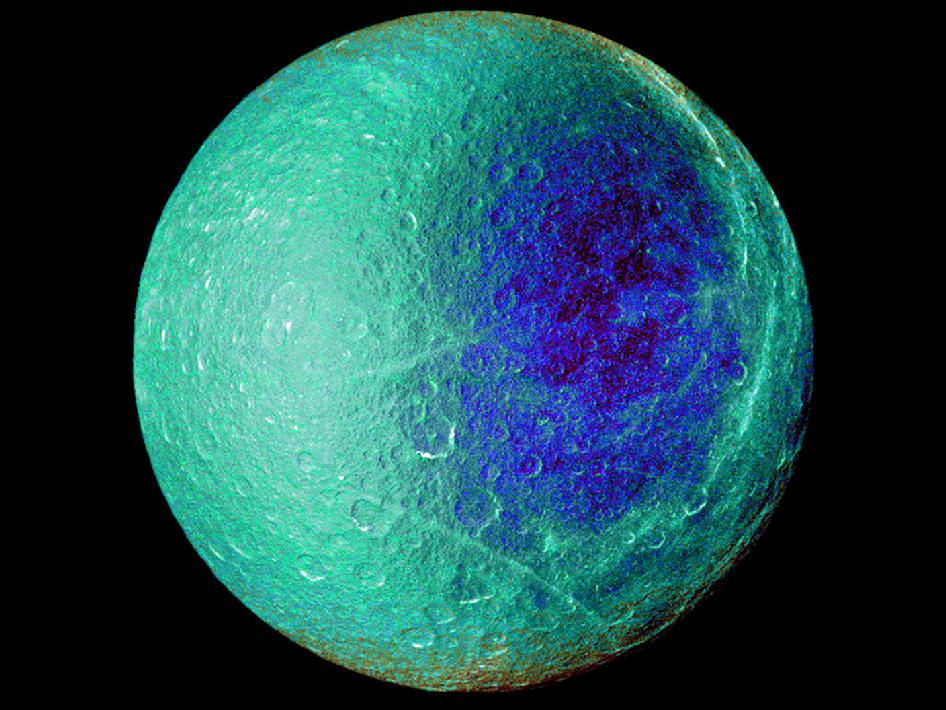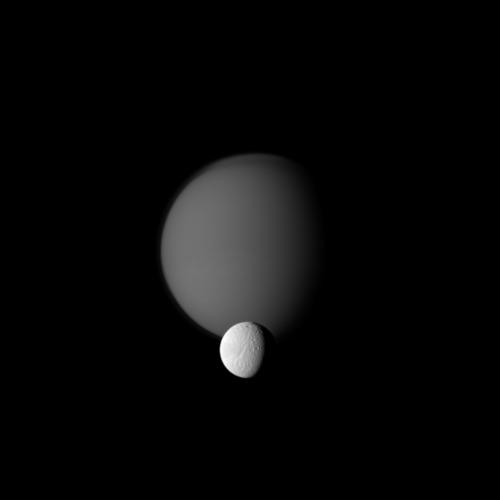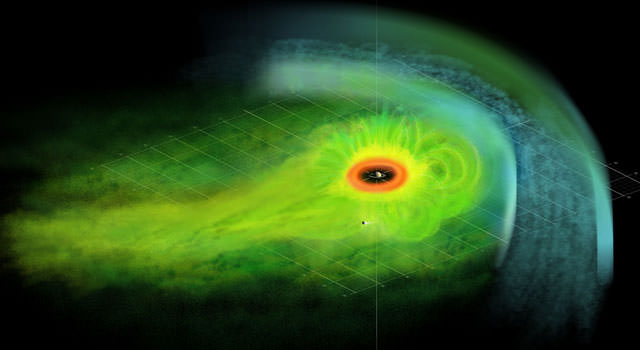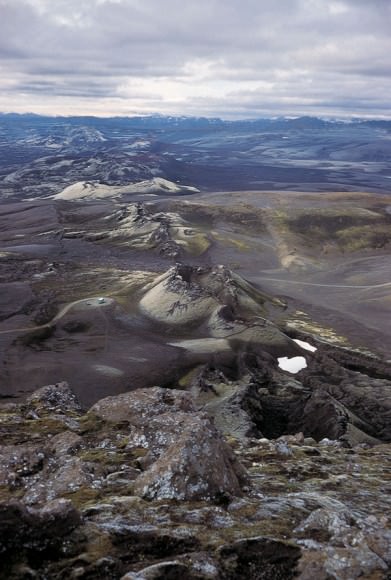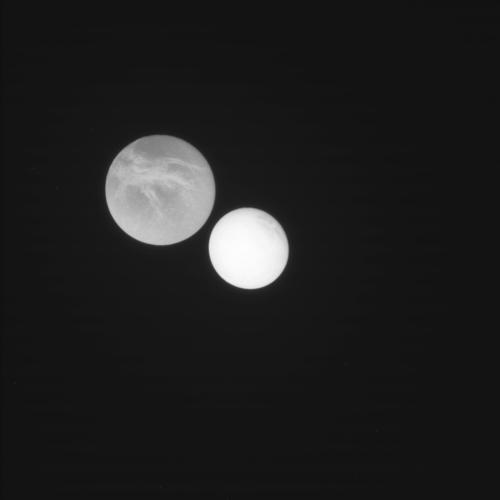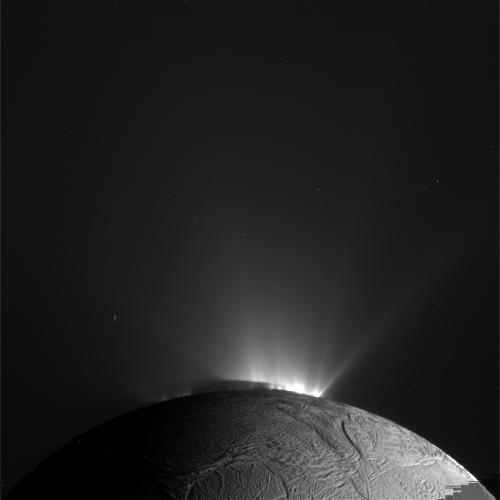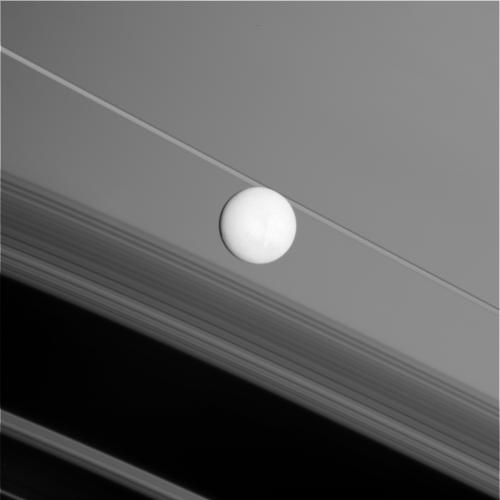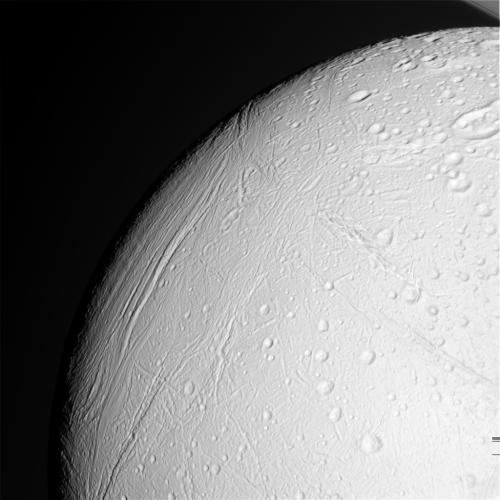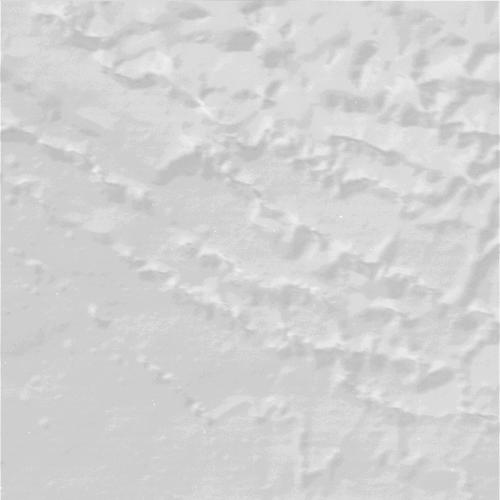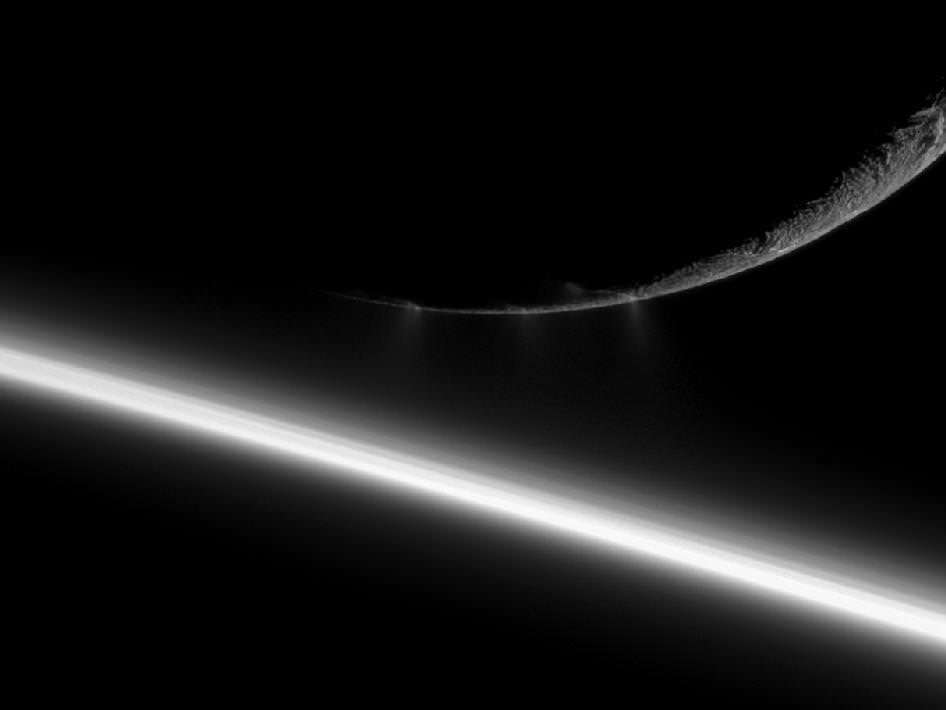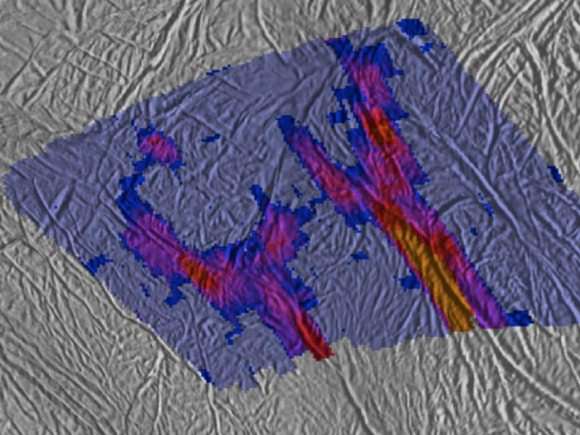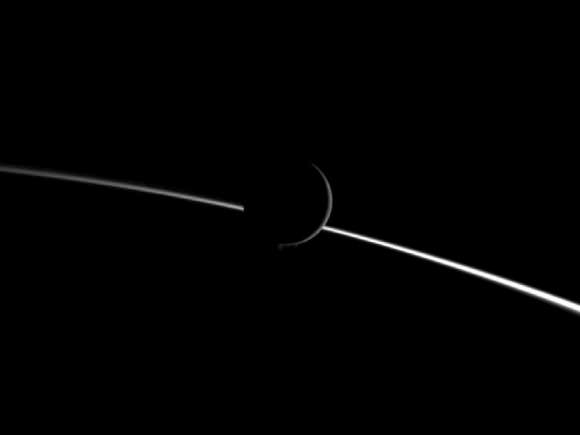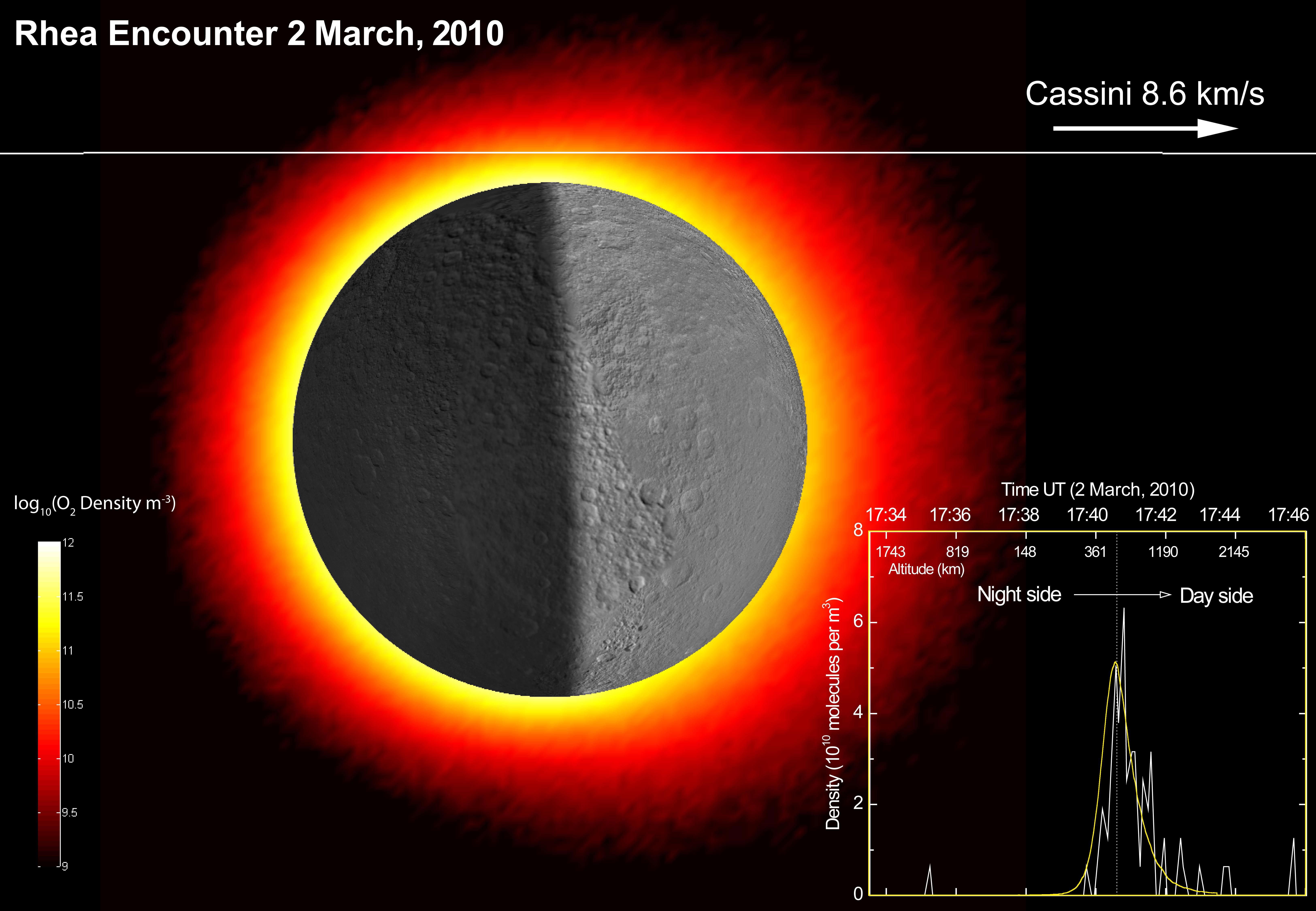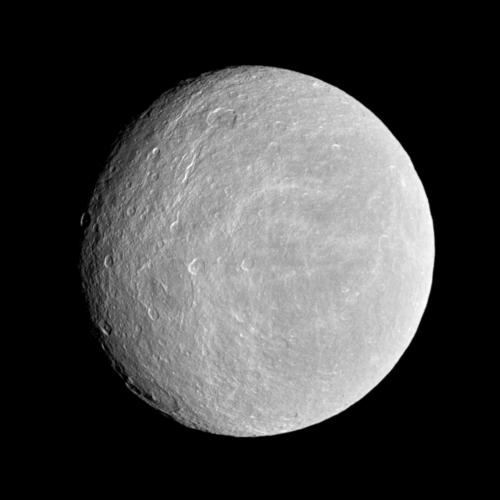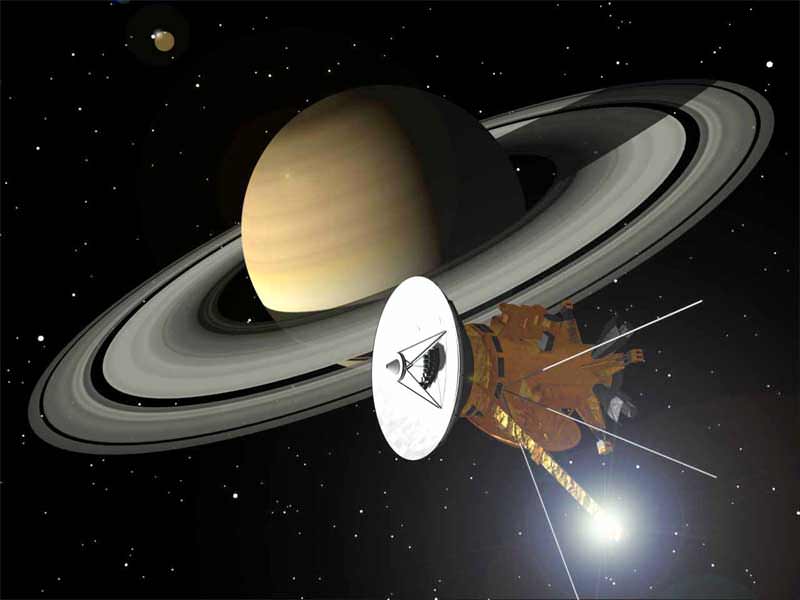[/caption]
Saturn’s second largest moon Rhea has gotten a couple of close-up looks by the Cassini spacecraft which show dramatic views of fractures cutting through craters on the moon’s surface. The new images reveal a history of tectonic rumbling, scientists say. The images are among the highest-resolution views ever obtained of Rhea, including a 3-D look at a tectonically fractured region showing cracks as deep as 4 kilometers (2.5 miles).
“These recent, high-resolution Cassini images help us put Saturn’s moon in the context of the moons’ geological family tree,” said Paul Helfenstein, Cassini imaging team associate, based at Cornell University, Ithaca, N.Y. “Since NASA’s Voyager mission visited Saturn, scientists have thought of Rhea and Dione as close cousins, with some differences in size and density. The new images show us they’re more like fraternal twins, where the resemblance is more than skin deep. This probably comes from their nearness to each other in orbit.”
Cassini made to two close passes of Rhea on Nov. 21, 2009 and March 2, 2010, and the flybys were designed in part to search for a ring thought to encircle the moon, the existence of which has now been ruled out. During the March flyby, Cassini made its closest- approach to Rhea’s surface so far, swooping within 100 kilometers (62 miles) of the moon.
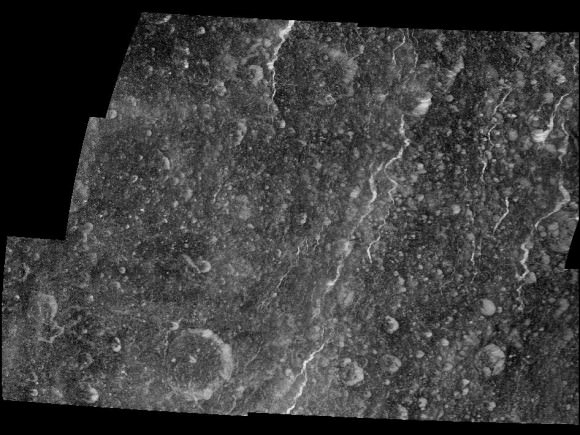
These unique views are among the best ever obtained of the side of Rhea that always faces away from Saturn. Other views show a web of bright, “wispy” fractures resembling some that were first spotted on another part of Rhea by the two Voyager spacecraft in 1980 and 1981. These images are helping to answer questions scientists have had about Rhea since the Voyager mission.
At that time, scientists thought the wispy markings on the trailing hemispheres – the sides of moons that face backward in the orbit around a planet – of Rhea and the neighboring moon Dione were possible cryovolcanic deposits, or the residue of icy material erupting. The low resolution of Voyager images prevented a closer inspection of these regions. Since July 2004, Cassini’s imaging cameras have captured pictures the trailing hemispheres of both satellites several times at much higher resolution. The images have shown that the wispy markings are actually exposures of bright ice along the steep walls of long scarps, or lines of cliffs, which indicate tectonic activity produced the features rather than cryovolcanism.
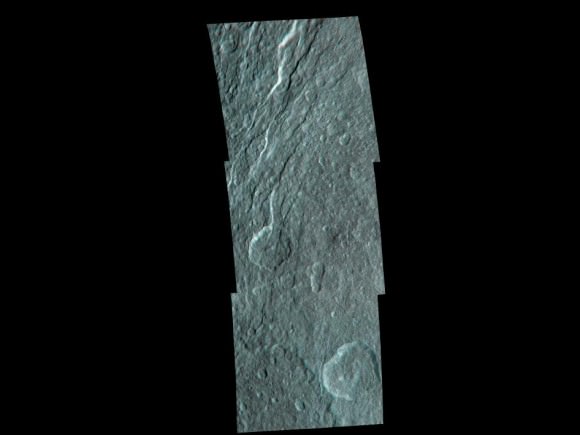
Scientists combined images of the trailing hemisphere taken about one hour apart to create a 3-D image revealing a set of closely spaced troughs that sometimes look linear and sometimes look sinuous. The 3-D image also shows uplifted blocks interspersed through the terrain that cut through older, densely cratered plains. While the densely cratered plains imply that Rhea has not experienced much internal activity since its early history that would have repaved the moon, these imaging data suggest that some regions have ruptured in response to tectonic stress more recently. Troughs and other fault topography cut through the two largest craters in the scene, which are not as scarred with smaller craters, indicating that these craters are comparatively young. In some places, material has moved downslope along the scarps and accumulated on the flatter floors.
A mosaic of the March flyby images shows bright, icy fractures cutting across the surface of the moon, sometimes at right angles to each other. A false-color view of the entire disk of the moon’s Saturn-facing side reveals a slightly bluer area, likely related to different surface compositions or to different sizes and fine-scale textures of the grains making up the moon’s icy soil.
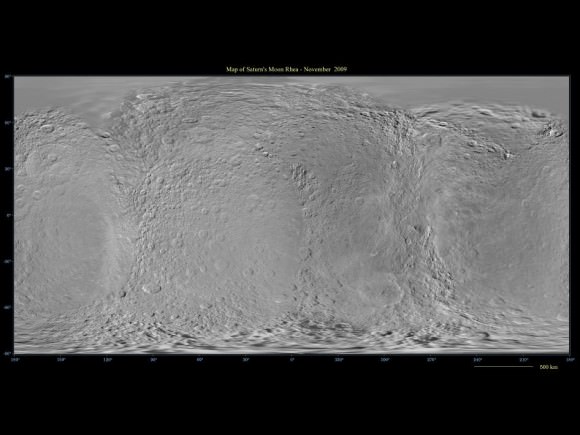
The new images have also helped to enhance maps of Rhea, including the first cartographic atlas of features on the moon complete with names approved by the International Astronomical Union. Cassini will continue to chart the terrain of this and other Saturnian moons with ever-improving resolution, especially for terrain at high northern latitudes, until 2017.
An upcoming flyby should provide even more details about Rhea.
“The 11th of January 2011 will be especially exciting, when Cassini flies just 76 kilometers [47 miles] above the surface of Rhea,” said Thomas Roatsch, a Cassini imaging team scientist based at the German Aerospace Center Institute of Planetary Research in Berlin. “These will be by far the best images we’ve ever had of Rhea’s surface – details down to just a few meters will become recognizable.”
For more images and for higher resolution versions of the ones seen here, see the CICLOPS website, or NASA’s Cassini website.
Source: JPL

